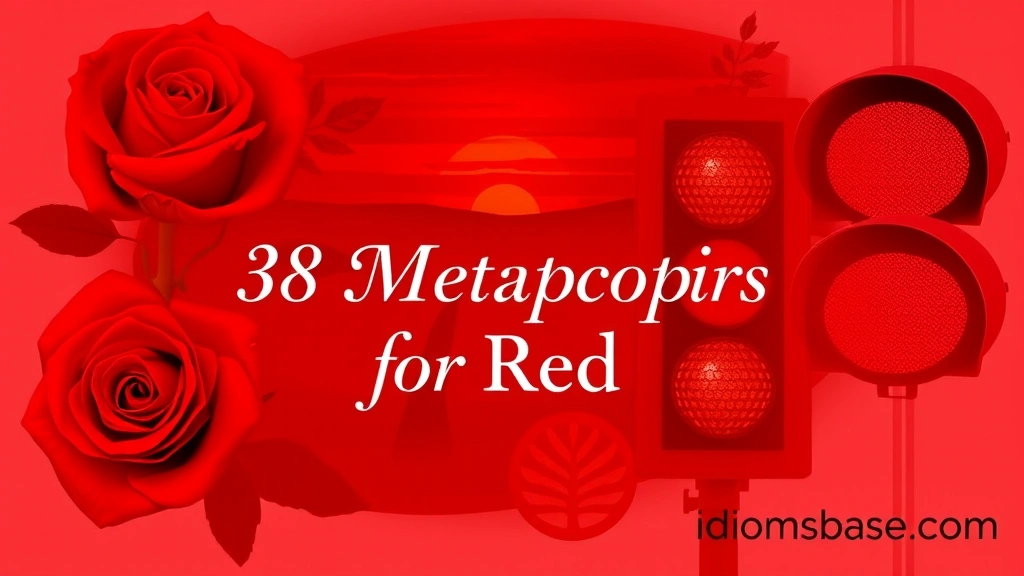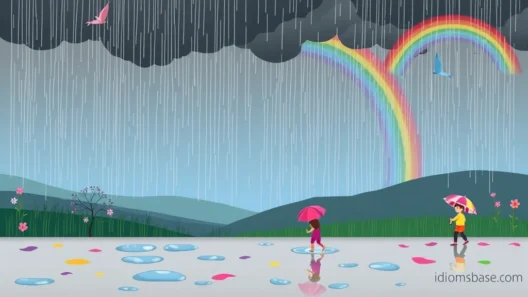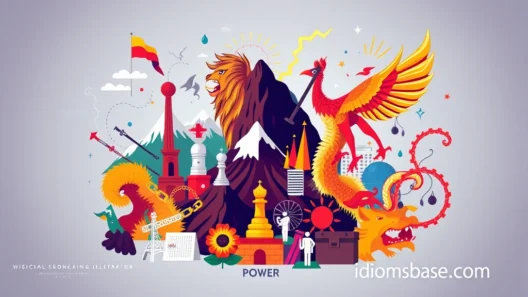Hey there, color enthusiasts and wordsmiths! Ever stopped to think about how much power a single color holds? Red isn't just a color; it's an emotion, a statement, a force of nature! From the fiery passion of a new love to the stark warning of danger, red paints our world with intensity. But how do we truly capture its essence in words? That's where metaphors come in!
Metaphors are like magic wands for writers, letting us describe one thing by saying it is another. And when it comes to red, oh boy, the possibilities are endless! You're about to dive into a vibrant collection of 38 incredible metaphors that will help you describe red in ways you never imagined. Get ready to ignite your imagination and add a splash of crimson brilliance to your vocabulary!
38 Fiery Metaphors for Red
Let’s explore some fantastic ways to describe the color red, from the subtle blush to the roaring inferno. Each one paints a unique picture, offering you a rich palette of descriptive choices.
Red as Emotion and Passion
Red is often the color of our deepest feelings.
- Red as a bleeding heart: Symbolizing profound sorrow or empathy.
- Red as a wildfire of passion: Capturing intense, uncontrollable desire or love.
- Red as a blush of embarrassment: Showing a sudden, visible sign of shyness or shame.
- Red as the flush of anger: Illustrating a physical manifestation of rage.
- Red as a burst of joy: Describing an overwhelming, vibrant feeling of happiness.
- Red as a pulse of life: Connecting it to vitality and existence.
Red as Nature's Hues
Think about the natural world – red is everywhere!
- Red as a sunset's farewell kiss: Evoking the warm, fading light of dusk.
- Red as an apple's sweet promise: Highlighting its natural ripeness and appeal.
- Red as a rose's silent song: Symbolizing beauty, love, and sometimes thorns.
- Red as a poppy's fleeting dream: Representing delicate beauty and transience.
- Red as a ruby's deep gaze: Likening it to a precious, captivating gem.
- Red as a cherry's juicy heart: Describing its succulent, vibrant core.
- Red as autumn's fiery embrace: Capturing the brilliant transformation of leaves.
- Red as a cardinal's bright beacon: Referring to the striking color of the bird.
- Red as lava's slow crawl: Illustrating its molten, powerful flow.
Red as Power and Warning
Red often carries a strong message, whether of strength or caution.
- Red as a stop sign's firm command: Emphasizing its universal signal for halt.
- Red as a siren's urgent scream: Connecting it to immediate danger or emergency.
- Red as a warrior's battle stain: Symbolizing courage, conflict, and sacrifice.
- Red as a king's royal decree: Highlighting authority and importance.
- Red as a burning ember of defiance: Representing resistance and unyielding spirit.
- Red as a warning flag unfurled: Signifying peril or a call to attention.
- Red as a power surge: Indicating a sudden, strong influx of energy.
Red as Vitality and Life
Red is undeniably linked to life itself.

- Red as the river of life (blood): Directly linking it to essential bodily fluid.
- Red as a newborn's first cry: Symbolizing fresh beginnings and raw existence.
- Red as a heartbeat's steady rhythm: Connecting it to the core of living.
- Red as a health barometer: Showing vitality or illness.
Red as Abstract Concepts
Sometimes, red can represent ideas that aren't physical.
- Red as a thread of fate: Suggesting destiny or an interconnected path.
- Red as a spotlight of attention: Highlighting prominence or focus.
- Red as a whisper of temptation: Hinting at alluring yet potentially dangerous choices.
- Red as a stain on history: Denoting a memorable, often negative, mark.
- Red as a badge of honor: Symbolizing achievement or distinction.
Red in Everyday Objects
Think about the objects around you that are red.
- Red as a fire truck's heroic gleam: Evoking rescue and urgency.
- Red as a lipstick's bold statement: Representing confidence and glamour.
- Red as a brick wall's sturdy resolve: Suggesting strength and permanence.
- Red as a velvet curtain's dramatic reveal: Implying luxury and anticipation.
- Red as a chili pepper's fiery bite: Connecting it to intensity and heat.
- Red as a superhero's cape: Symbolizing power, bravery, and heroism.
- Red as a cherry on top: Representing the perfect, delightful finishing touch.
Key Takeaways

You've just explored a rich tapestry of ways to describe the color red! Here’s what you should remember:
- Red is Versatile: It can represent everything from love and anger to danger and vitality.
- Metaphors Add Depth: Using metaphors transforms simple descriptions into vivid, memorable imagery.
- Context is King: The best metaphor for red depends on what emotion, object, or idea you want to convey.
- Unleash Your Creativity: Don't be afraid to invent your own metaphors for red!
Frequently Asked Questions
You might have a few questions bubbling up about metaphors and the marvelous color red. Let's tackle them!
Q1: What is a metaphor, really?
A metaphor is a figure of speech where you say one thing is another, even though it's not literally true. It’s like saying "life is a journey" – life isn't actually a road trip, but the metaphor helps us understand it better. It creates a vivid comparison without using "like" or "as."
Q2: Why are metaphors important in writing?
Metaphors are super important because they make your writing more engaging, imaginative, and memorable! They help readers visualize ideas, feel emotions, and understand complex concepts in a simpler way. They add flavor and depth, turning plain sentences into powerful statements.

Q3: How can I choose the best metaphor for red in my writing?
Great question! To pick the best metaphor, first think about the feeling or quality you want to convey about red. Is it passion? Danger? Warmth? Then, brainstorm objects, actions, or concepts that share that same feeling or quality. For example, if you want to show intense passion, "red as a wildfire of passion" works well because wildfires are intense and consume everything.
Q4: Can I create my own metaphors for red?
Absolutely, yes! In fact, that's encouraged! The best metaphors often come from your own unique observations and creativity. Think about your personal experiences with red, what it reminds you of, and how it makes you feel. The more original your metaphor, the more impactful it can be. Don't be afraid to experiment!
Q5: Are there any common mistakes to avoid when using metaphors?
Yes, a couple! Try to avoid "mixed metaphors," which combine two unrelated metaphors in a way that sounds confusing (e.g., "He was a loose cannon, and she pulled the rug out from under him"). Also, make sure your metaphor isn't too cliché or overused, unless that's your intention. Aim for freshness and clarity!
Q6: How does using metaphors for red help with SEO?
While metaphors aren't direct SEO tools like keywords, they significantly improve content quality and engagement. Engaging content keeps readers on your page longer, signals to search engines that your content is valuable, and encourages sharing. High-quality, well-written content, rich with descriptive language, naturally performs better in search results because it offers a better user experience.
Q7: What's the difference between a metaphor and a simile?
This is a classic! The main difference is that a simile uses "like" or "as" to make a comparison (e.g., "red as a rose"), while a metaphor states that one thing is another (e.g., "red is a rose"). Metaphors are generally considered more direct and powerful.
Q8: Can red metaphors be used in everyday conversation?
Definitely! People use metaphors all the time without even realizing it. Saying "he saw red" (meaning he got angry) is a common red metaphor. Incorporating these vivid descriptions can make your conversations more interesting and expressive.
There you have it! A deep dive into the world of red metaphors. We hope this exploration has sparked your imagination and given you a whole new appreciation for the power of this incredible color and the magic of words. Now go forth and paint your world with vibrant, metaphorical reds! What's your favorite red metaphor? Share it with us!






